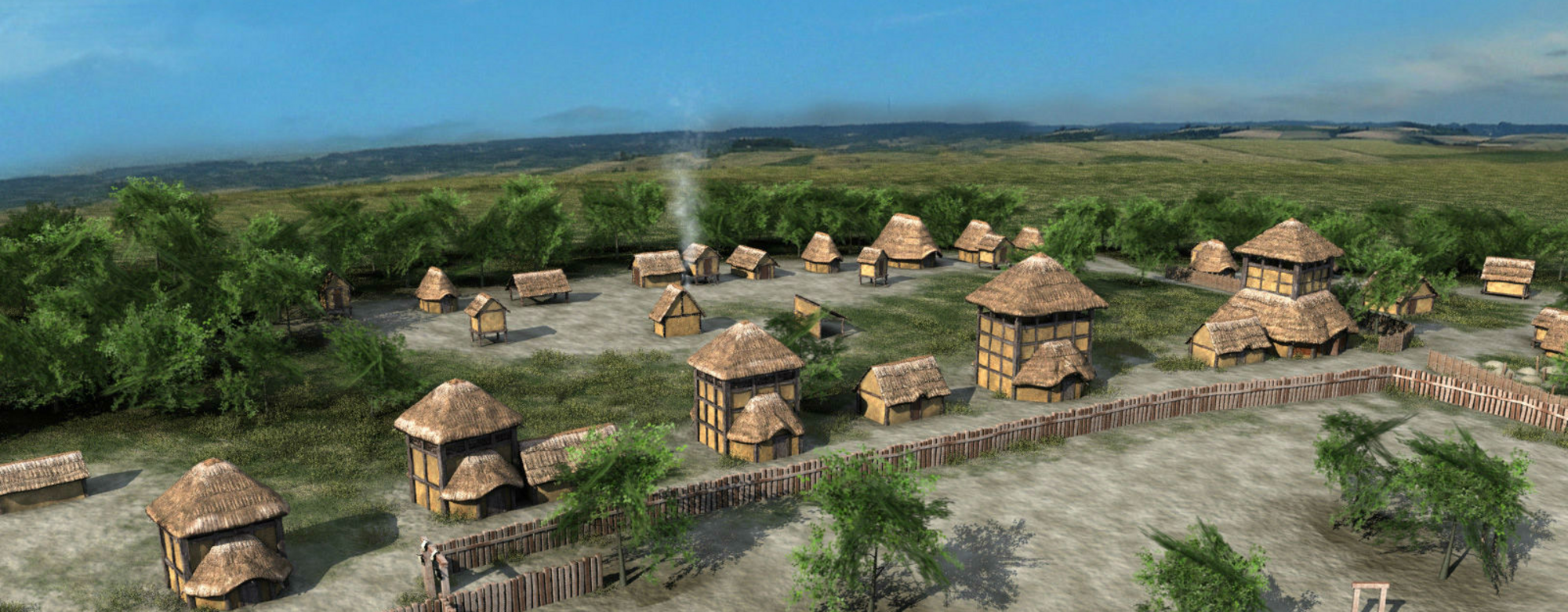
- Home
- The Gallic village
- Establishing the village
The Bronze Age burial mound was to play a pivotal role, since it would be assimilated into a hero's tomb. Nothing would be built nearby and the grove of trees around it would be preserved.
The highest area of ground was initially chosen as the site for the community square, enclosed by a palisade and with religious buildings on its western edge. The only access, from the south, was shown by a path bordered by wooden fences which continued ten metres into the square, up to a small grove of trees. The space was almost 3500 m2, large enough for a gathering of a thousand people, more than the total number of village inhabitants at its height.
Once the community and religious space had been decided, the settlers moved straight on to devising the geometric layout of the village. Around three vast rectangular courtyards, each measuring one hectare, temporary houses standing on four posts – identifiable from their circular foundation holes – were replaced by more permanent structures, houses and outbuildings, raised on hewn posts, marking the division into lots of the large original plots.

